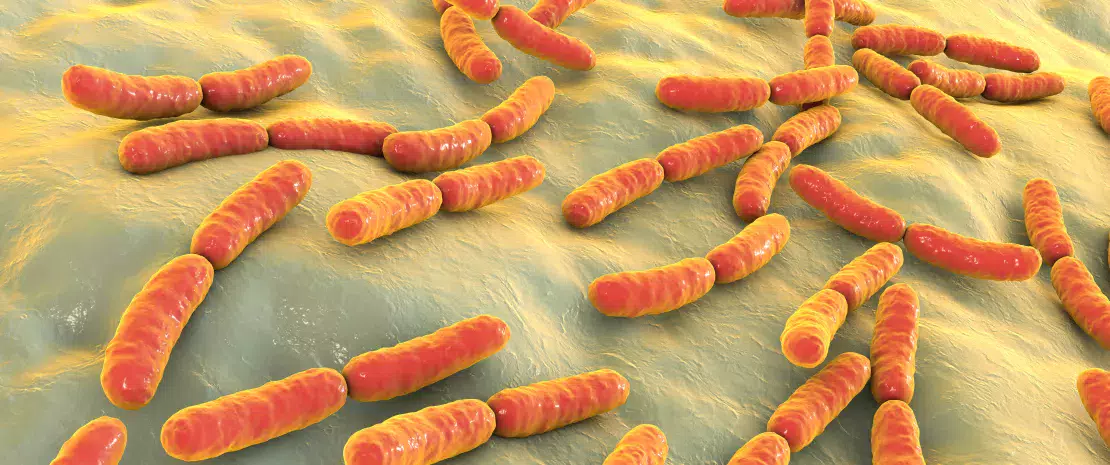The role of the vaginal, uterine and gut microbiota in endometriosis
Cause or consequence? While this is a difficult question to answer, it appears that the gut and reproductive tract microbiota of women suffering from endometriosis are involved in the development of this serious disease.
Sources
This article is based on scientific information

About this article
Endometriosis (EMS) is an inflammatory disease characterized by the presence of endometrial tissue outside the uterine cavity. Different studies suggest a prevalence for the disease of between 6% and 15% for women of reproductive age. EMS can cause severe primary dysmenorrhea, reduced infertility, and pelvic mass, seriously affecting women’s quality of life. The pathogenesis of EMS is still poorly understood, but the microbiota may be involved. Certain hypotheses blame inflammatory endotoxins found in the peritoneal cavity, such as bacterial lipopolysaccharide (LPS). These inflammatory endotoxins could regulate the pro-inflammatory reaction and promote the growth of endometriosis.1
Vaginal lactobacillus diminished
To further investigate the “bacterial contamination hypothesis”, a team collected microbiota samples from along the reproductive tracts of 36 women with endometriosis and 14 controls who had undergone surgery for a benign gynecological tumor. The results? An increasingly pronounced dysbiosis as one moves up the reproductive tract, a decrease in Lactobacillus in the vaginal flora which becomes more pronounced as one moves up towards the endometrium, and specific (sidenote: Operational Taxonomic Unit groups of organisms usually not cultivated or not identified, classified on the basis of the similarity of the DNA sequencing of a given gene. Frequently used as an equivalent to the concept of species ) in the cervical mucus which increase in the upper genital tract (endometrial samples and peritoneal fluid). This alteration of the microbiota all along the reproductive tract suggests that certain bacteria may be involved in the pathogenesis of EMS.
Role of the gut microbiota?
EMS is far from being limited to gynecological symptoms: up to 90% of patients report gastrointestinal symptoms as well.2 Two studies, one in Sweden2 (66 EMS patients, 198 matched controls) and the other in Shanghai3 (12 EMS patients with moderate to severe forms of the disease, 12 controls), examined the link between the gut microbiota and EMS: (sidenote: Beta diversity Rate of variation in species composition, calculated by comparing the number of unique taxa in each ecosystem ) , and to a (sidenote: Beta diversity Rate of variation in species composition, calculated by comparing the number of unique taxa in each ecosystem ) , diversity of the EMS patients’ flora was found to be lower than that of the controls. In addition, the abundance of bacterial taxa differed. In the Chinese study, Prevotella was dominant among the EMS patients, while Coprococcus prevailed among the controls. Additionally, the gut microbiota of the EMS group was enriched for certain microbial function categories (environmental information processing, endocrine system, and immune system). Serum levels of hormones (particularly estradiol) and inflammatory factors (notably IL-8) were significantly higher in the women with EMS.3 Lastly, correlations were detected between the abundance of both Blautia and Dorea and estradiol level, and between Subdoligranulum abundance and IL-8 level.3 Thus, there are associations between the gut microbiota and both serum hormones and inflammatory factors in EMS.
Estrogen or inflammatory etiology?
EMS is an estrogen-dependent disease2 and EMS patients generally have high estrogen levels in the serum.3 The gut microbiota, including Ruminococcaceae and Clostridia, may affect estrogen levels in the serum by modulating the reabsorption of estrogen excreted in the bile which eventually enters the gut.3 Other authors suggest a regulatory role for the gut microbiota in inflammatory processes outside the gastrointestinal tract.2 In other words, although correlations have been observed and hypotheses suggested, the actual mechanisms involved have not yet been elucidated. Nevertheless, these three studies highlight the involvement of the microbiota of the reproductive and digestive tracts in EMS, giving hope for an improvement in the diagnosis and management of the disease.
1 Wei W, Zhang X, Tang H et al. Microbiota composition and distribution along the female reproductive tract of women with endometriosis. Ann Clin Microbiol Antimicrob. 2020 Apr 16;19(1):15.
2 Svensson A, Brunkwall L, Roth B et al. Associations Between Endometriosis and Gut Microbiota. Reprod Sci. 2021 Aug;28(8):2367-2377.
3 Shan J, Ni Z, Cheng W et al. Gut microbiota imbalance and its correlations with hormone and inflammatory factors in patients with stage 3/4 endometriosis. Arch Gynecol Obstet. 2021 Apr 11.





